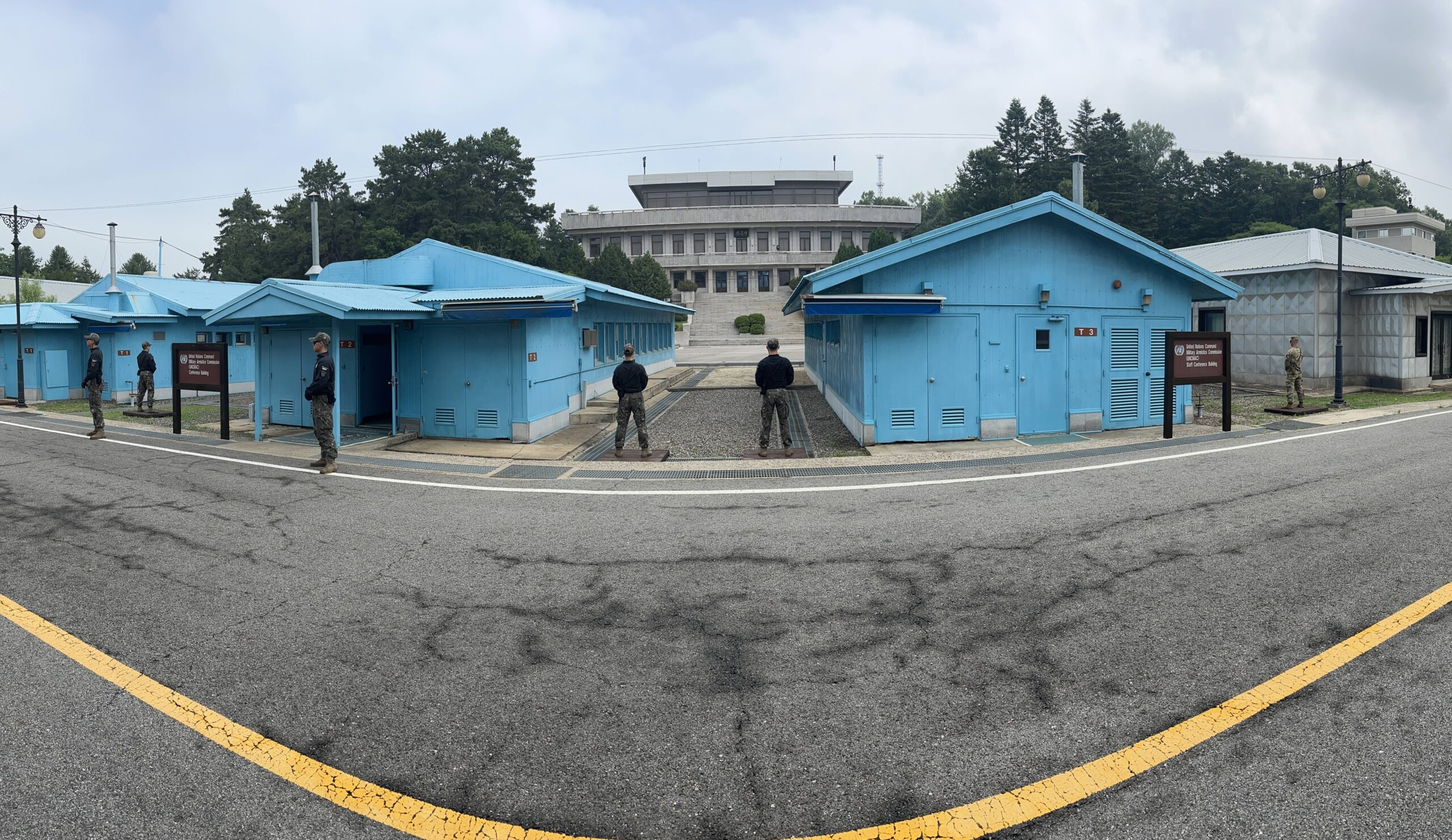
South Korea on Tuesday fully suspended the 2018 Comprehensive Military Agreement with North Korea following several days of North Korea sending trash-filled balloons across the border and jamming GPS signals. Meanwhile, Japan and South Korea on Saturday agreed to implement procedures for unexpected encounters at sea between their two navies.
Seoul’s Ministry of National Defense said in a release that on Tuesday, following a resolution at a Cabinet meeting and approval by President Yoon Suk Yeol, the South Korean government decided to ‘“suspend the entire September 19 Military Agreement until mutual trust between South and North Korea is restored.”
Since North Korea’s failed satellite launch on May 27, it seriously threatened the safety of South Korean citizens and caused property damage by disrupting GPS signals, launching missiles and large-scale distribution of waste balloons.
As such, the South Korean government had decided to suspend the entire effectiveness of the CMA. “These measures are to restore normal military activities of our military in the area of the Military Demarcation Line and the Northwestern Islands, which have been restricted by the September 19 Military Agreement. In addition, we make it clear that our military will take all necessary measures to protect the lives and safety of our people in response to North Korean provocations,” read the release.
The 2018 agreement laid down a number of measures that would lower military tensions and accidental military clashes between the two sides. Included was dismantling of guard posts along the demilitarized zone (DMZ), a no-fly zone along the DMZ, cessation of live fire artillery drills and field exercises above the regiment level and above within three miles of the Military Demarcation Line. The CMA included a similar ban on live-fire and maritime maneuvers exercise along the borders in the East and West Sea and a ban tactical live-fire drills involving fixed-wing aircraft, including the firing of air-to-ground guided weapons within the designated no-fly zones in the eastern and western regions of the MDL.
Seoul had already suspended part of the agreement in November last year, which dealt with military flights around the border and resumed reconnaissance and surveillance flights there. In response to Tuesday’s announcement of the suspension, Pyongyang terminated the CMA completely on its side. North Korea has not made any official comment on South Korea’s full suspension of the CMA, likely because it already canceled the agreement last year.
The suspension of the agreement allows South Korea to fully resume all military activities along the border and followed several days of North Korea sending trash filled balloons across the border and conducting GPS signal jamming in the waters near South Korea’s northwestern border islands. These activities were in retaliation for North Korean defectors and South Korea activists for launching balloons across the border into North Korea carrying anti-North Korean leaflets. Pyongyang is saying it will continue sending balloons each time balloons from South Korea are sent.
The South Korean government is unable to prevent citizens from launching balloons into North Korea as South Korea’s Constitutional Court in September 2023 struck down a 2020 law that criminalized the sending of anti-Pyongyang propaganda leaflets to North Korea, calling it an excessive restriction on free speech.
On Wednesday, a U.S. Air Force B-1 bomber conducted a live munitions drop together with Republic of Korea Air Force F-15K Slam Eagle fighters at Pilsung Range, South Korea, according to an Air Force release.
One B-1 bomber from the 37th Expeditionary Bomb Squadron, currently assigned to Andersen Air Force Base, Guam, and two F-15K fighters from the Royal Korean Air Force’s 11th Fighter Wing, Daegu Air Base, successfully released live GBU-38, 500-pound joint direct-attack munitions, simultaneously striking multiple simulated targets. “The training marked the first time the B-1 has conducted a live munitions drop on the Korean peninsula since 2017 and offered the alliance its latest opportunity to prepare for combat to defend the Korean peninsula, cementing its combined defense posture and demonstrating extended deterrence,” read the release.
The release also stated that following the live-drop, the B-1 joined U.S. Marine Corps F-35Bs, USAF F-16s, and KC-135 Stratotankers and ROKAF F-35As and KF-16s for air-to-air training over the western region of South Korea.
Earlier on Saturday, as part of a bilateral meeting between Japan Defense Minister Minoru Kihara and South Korean Defense Minister Shin Won-sik in Singapore on the sideline of the International Institute of Strategic Studies Shangri-La Dialogue 2024, the two defense chiefs agreed on the implementation of a joint document by the Japan Maritime Self Defense Force and Republic of Korea Navy that stated guidelines, procedures and communication channels for the two navies when unexpectedly encountering each other at sea.
The two countries have been working toward the document since last year to avoid a repeat of a 2018 incident in the Sea of Japan in which Japan claimed ROKN destroyer ROKS Gwanggaeto the Great (DDH-971) illuminated a JMSDF P-1 maritime patrol aircraft with its fire-control radar. South Korea, however, has denied this and counterclaimed that the P-1 flew dangerously low over the destroyer.
Japan’s Ministry of Defense stated in a release on the meeting that both parties had been working to develop measures to prevent a recurrence of such an incident that could jeopardize Japan-South Korea and Japan-South Korea-U.S. security cooperation.
The 2018 incident had limited military cooperation between the two countries, but both the Kishida and Yoon Suk Yeol administrations have been pushing toward closer military and security cooperation in light of the threat posed by North Korea, and agreeing to disagree on contentious issues between the two countries. In a press conference on Saturday evening in Singapore, Kihara stated that the respective positions of Japan and South Korea on the 2018 incident remained unchanged, but both sides were now able to avoid similar incidents from occurring again.





